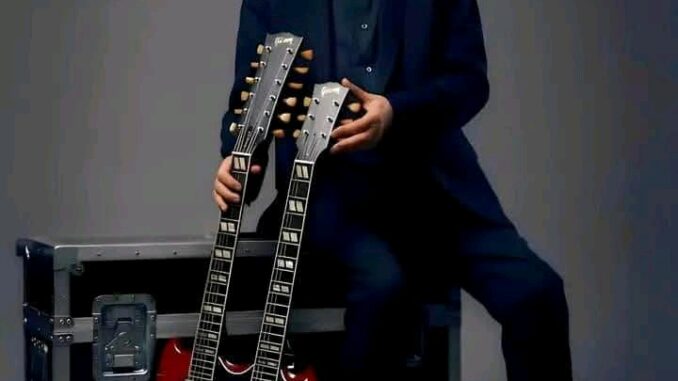
From Led Zeppelin’s second album onward, Jimmy Page carved his name into rock history not just through his playing, but through the distinct sound crafted by his carefully chosen instruments. Central to this sonic evolution was his legendary Gibson Les Paul Standard, famously acquired from Joe Walsh of the James Gang. Paired with the thunderous roar of Marshall amplifiers, this combination became the backbone of Page’s signature tone — a sound that was heavy, fluid, and endlessly expressive.
The Les Paul, with its thick, warm sustain, allowed Page to channel the full emotional range of his playing, from searing solos to the dark, riff-heavy landscapes that defined Led Zeppelin II and beyond. Songs like “Whole Lotta Love” and “Heartbreaker” showcase this raw power, with the Les Paul and Marshall stack working in perfect harmony to deliver some of the most iconic riffs in rock.
In the studio, however, Page’s approach was far more varied and nuanced. For the acoustic textures that defined Led Zeppelin III and parts of Led Zeppelin IV, he turned to a more humble but equally vital instrument: the Harmony Sovereign H-1260 acoustic guitar. Affordable and unassuming, the Sovereign offered a rich, resonant tone that perfectly suited the folk-inspired detours of tracks like “Bron-Y-Aur Stomp” and “Going to California.” Its earthy, open sound provided a vital counterpoint to the heavier electric numbers, showcasing Page’s mastery of dynamics and atmosphere.
Live performances in the early 1970s saw Page wielding not only his beloved Les Paul but also incorporating other guitars to match the demands of Zeppelin’s sprawling setlists. His famed double-neck Gibson EDS-1275 became indispensable for live renditions of “Stairway to Heaven,” allowing him to seamlessly switch between twelve-string and six-string parts without missing a beat.
The combination of these instruments, paired with a keen ear for amplification and effects — such as the Echoplex delay and Tone Bender fuzz — gave Jimmy Page an arsenal that could shift from delicate acoustic fingerpicking to ferocious electric assaults with mesmerizing ease.
Ultimately, Jimmy Page’s gear choices were not just technical decisions; they were extensions of his musical imagination. Through his Les Paul, his Harmony Sovereign, and his mastery of the studio and stage, Page shaped a soundscape that continues to inspire generations of musicians.
Leave a Reply